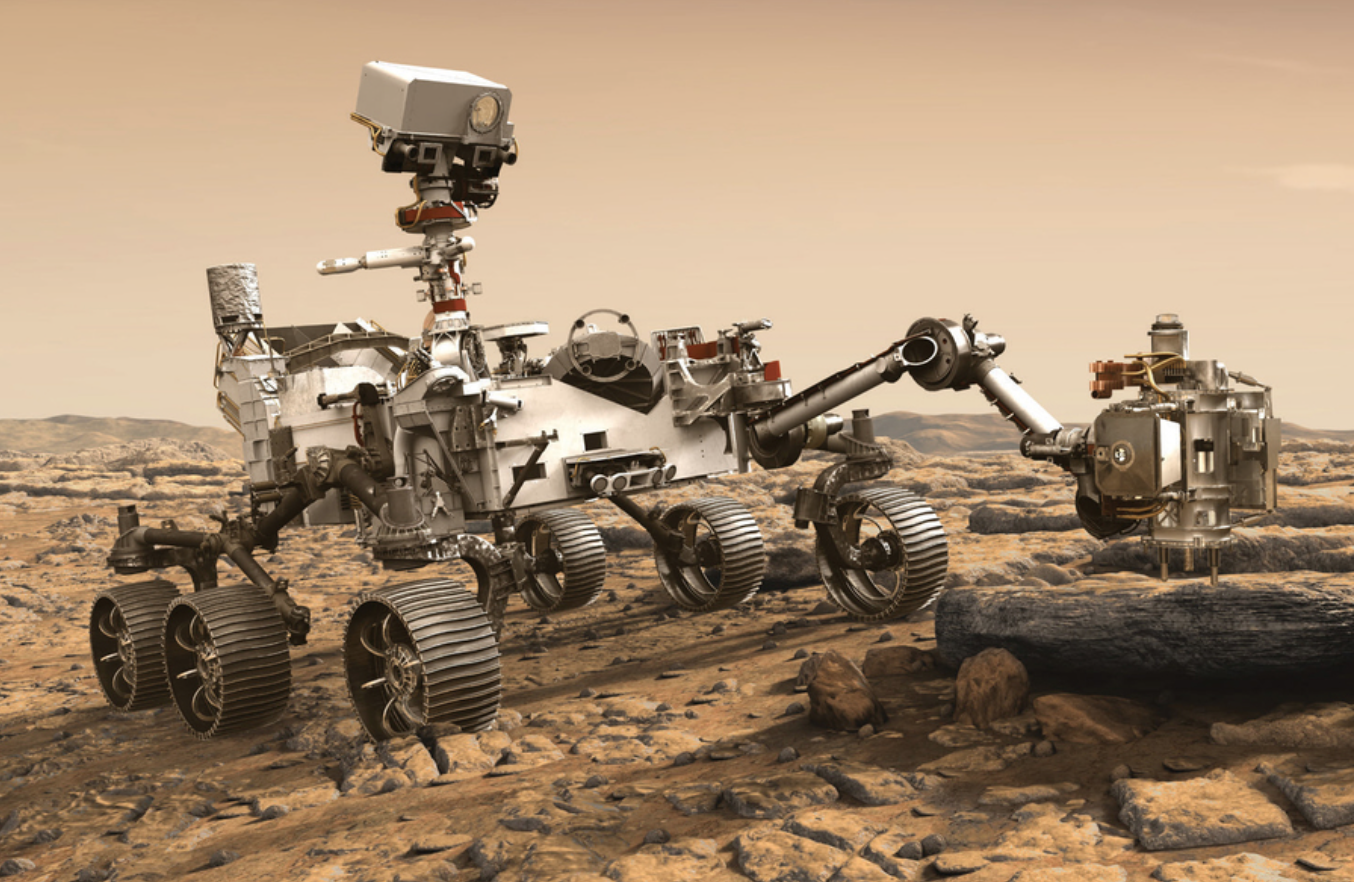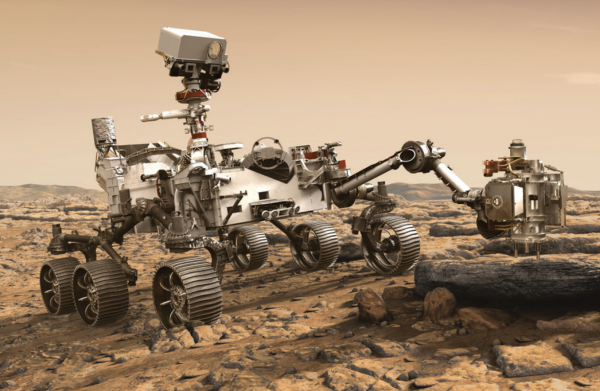KID REPORTERS’ NOTEBOOK
Perseverance Explores Mars


Perseverance, NASA’s Mars 2020 rover, is shown on the surface of Mars. The vehicle is carrying a mini-helicopter called Ingenuity.
On February 18, a rover named Perseverance landed on Mars. It is the fifth rover that NASA has sent to the “Red Planet” searching for signs of distant life.
Perseverance was launched on July 20, 2020. The rover spent seven months in flight, traveling 293 million miles to reach its destination of Mars. The six-wheeled, self-driving vehicle, which is carrying a mini-helicopter called Ingenuity, cost $2.75 billion to build and took 11 years to complete.
Perseverance will explore a Martian crater named Jezero, which is thought to have once been overflowing with water. The car-sized rover is equipped with 19 cameras, 2 microphones, and several tools, including a hollow drill bit to collect soil and rock samples in tubes. The samples can then be brought back to Earth for analysis.
The rover is also carrying MOXIE, which is short for Mars Oxygen In-Situ Resource Utilization Experiment. The device will create oxygen from the carbon dioxide on Mars. This innovation could lead the way to sustaining humans on a future crewed mission to Mars.
To learn more about Perserverance, I spoke with Mo Abid, the Mars 2020 deputy chief mechanical engineer at NASA’s Jet Propulsion Laboratory (JPL) in California. Abid began working on the rover project five years ago. Below are highlights from our conversation, which has been lightly edited for length and clarity.

Mo Abid, a mechanical engineer at NASA’s JPL, talks with Munveer via video.
What role did you play in the construction of Perseverance?
My role on the Mars 2020 mission was focused on mechanical engineering. I was responsible for all of the elements of the mechanical heart of the rover: the hardware, the deployment mechanism, motors, and things like that. It was a big challenge during testing to keep everything together.
Where did you run your tests since the Martian atmosphere has a third of the gravity as on Earth?
We used a simulator. To make sure the hardware is not going to fall apart when we get into the atmosphere on Mars, we test it to the level of rigor. We attached the rover to a super-long arm to test it, and it began to spin in a circle up to 40 times per minute. With that centrifugal (circular) force, we created the equivalent of the pressure it would go through on Mars.
What failures did you encounter while in the testing phase?
We broke the heat shield. It was really interesting because we were rushing for time. We had to work very, very hard with a huge team of people to first understand why it failed, then how to fix it. When we fixed it, we needed to test it again to make sure it was not going to fail again. That’s the best part of my job. Testing is really important since it’s better to fail on Earth than to fail on Mars.
Are you working on the next Mars rover?
Yes. The next mission is called Mars Sample Return. We’ll gather 30 tubes with samples of Martian soil that will be collected in the next few years. They’re going to be placed in a rocket on the rover that will be launched from Mars. It’s going to be the first time we launch from Mars. The rocket will meet a larger rocket outside of Mars that will bring both of them back to Earth. The landing of Perseverance is the beginning of Mars Sample Return.
